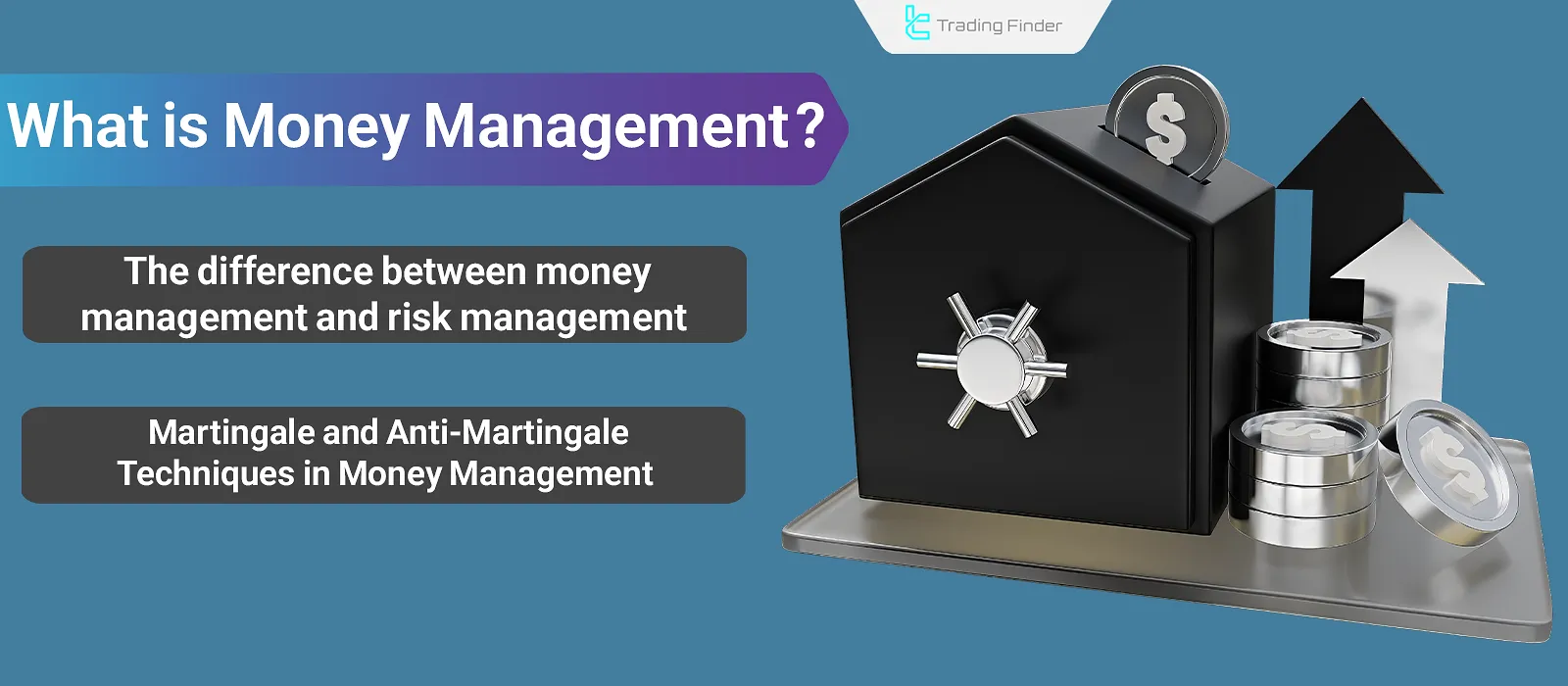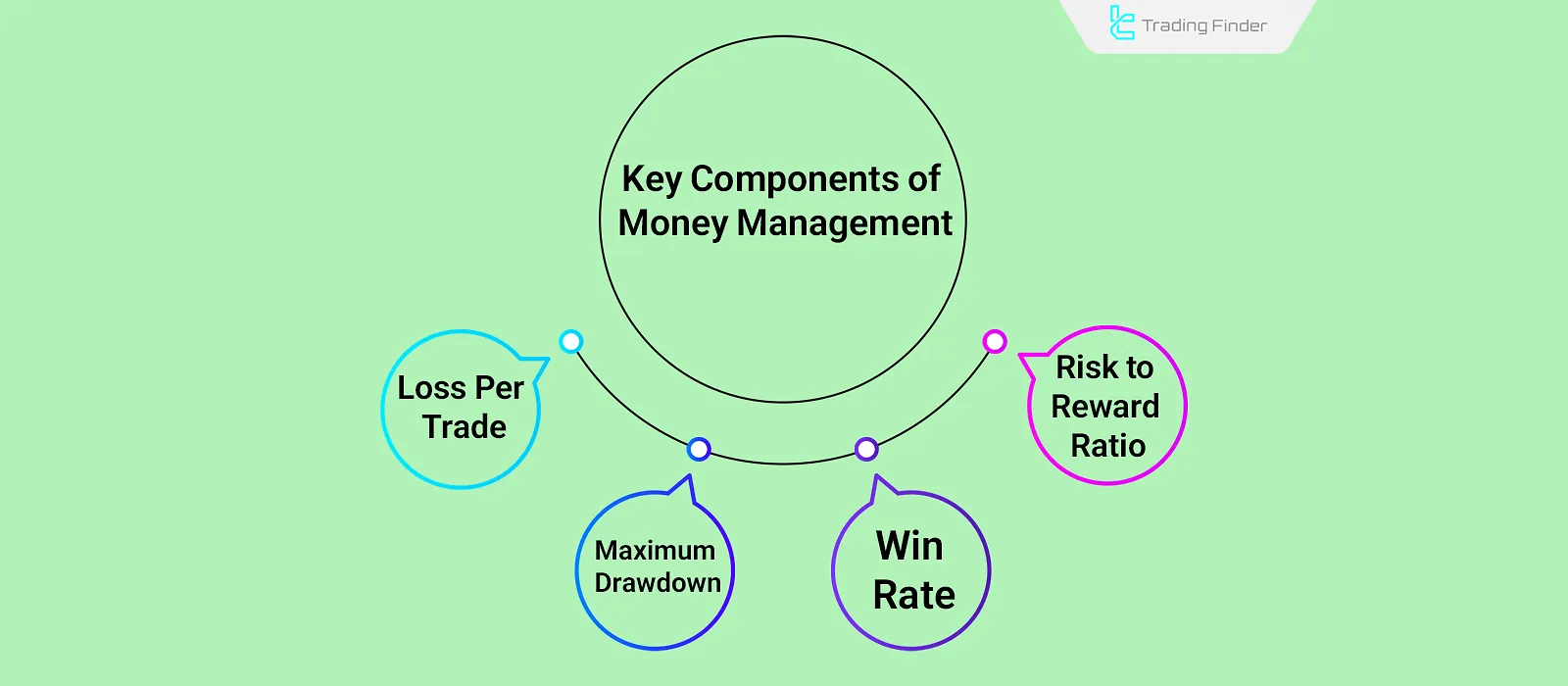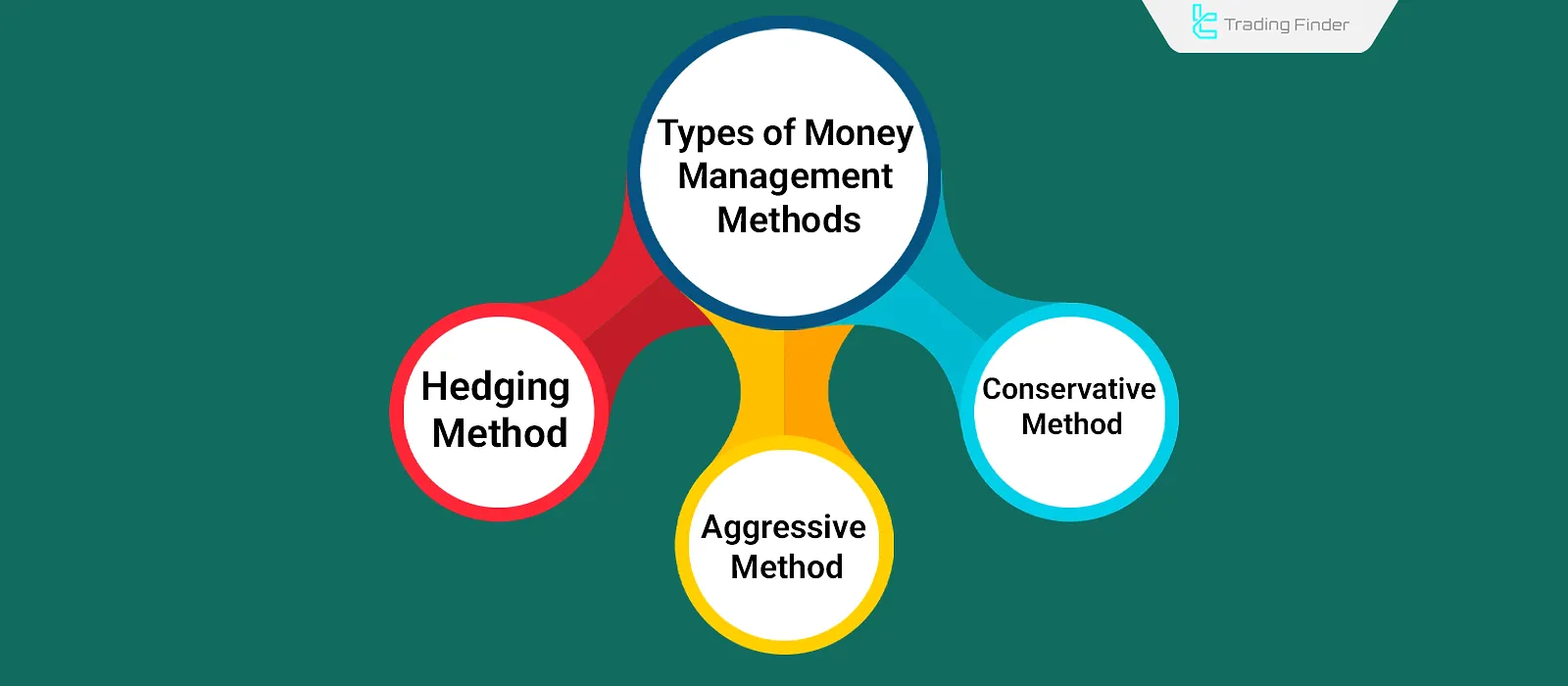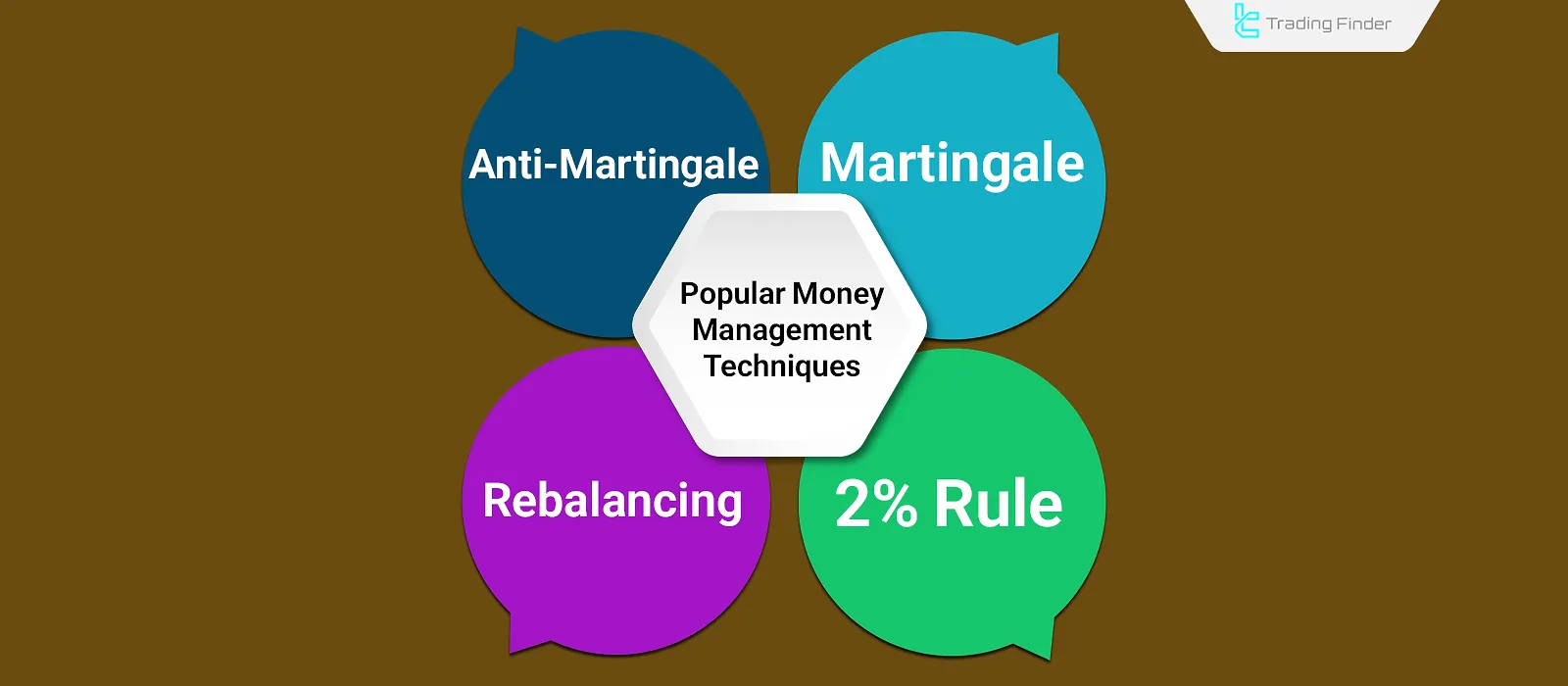Money management encompasses a set of rules designed to maximize investment returns while mitigating risk.
Therefore, in the long term, effective money management in trading enhances trading performance and ensures continuity across various markets, such as the Forex market.

Inmoney management, various factors, such as the risk-to-reward ratio, win rate, capital amount, trader personality, and others, are considered to control account losses and plan for potential profits.
Additionally, determining parameters such as Maximum Drawdown and per-trade loss plays a crucial role in optimizing the money management process.
What Is Money Management?
Money management is a key element of account control, where the trader employs various strategies to maximize account returns while minimizing risk.
Proper money management in trading encompasses multiple components, including evaluating returns, investment duration, trade risk, and other key factors.
Key Components of Money Management
To define money management rules, factors such as the risk-to-reward ratio and the success rate of the trading strategy must be analyzed.
Moreover, items such as Maximum Drawdown, per-trade loss, and other limits must be specified.

Various components of money management:
- The risk-to-reward ratio of trades: This ratio shows how many units of profit are at stake for every unit of risk;
- Strategy win rate: This shows the percentage of winning trades relative to losing trades;
- Maximum Drawdown: This refers to the maximum loss the total capital can tolerate;
- Loss per trade: This item, more specifically, defines the potential loss in each trade.
Benefits of Money Management in Trading
Effectivemoney management in trading supports sustained marketactivity andenhances the returnrate of the trading strategy. Key benefits include:
- Continuity in the market
- Preserving a large portion of capital during losing trades
- Reducing stress and pressure during trades
- Increasing the account’s return rate
Why Is Money Management Important?
In financial markets, no strategy offers a 100% success rate. Thus, there is always a possibility that prices will move against the trader’s analysis.
Effective money management helps preserve a large part of the capital in such situations, creating opportunities for additional trades and offsetting previous losses.
It also aids in increasing profits and maintaining the ability to keep operating in the market.
Factors Influencing Money Management
The implementation of money management depends on several factors, including the trader’s personality, available capital, market type, trading goals, and others.

Factors affecting money management:
- Trader Personality: Based on a trader’s risk tolerance, trade size, and selected markets may vary;
- Capital size: The available capital for trading directly influences market activity and reasonable risk levels per position;
- Market type: Different markets come with different levels of volatility and risk, which affects how risk is assessed and managed;
- Win Rate: Each trading strategy has a different success rate; thus, different money management techniques apply to each;
- Trading goals: Based on whether the objective is long-term or short-term, money management styles differ across trading plans.
Difference Between Money Management and Risk Management
Money management, in general, encompasses both aspects of trading, meaning that money management covers both profits and losses.
On the other hand, risk management takes a more specific approach by focusing on managing losses and preserving assets during critical situations.
In summary, decisions regarding how capital is allocated and utilized fall under the scope of money management in trading. In contrast, strategies for dealing with investment risks are classified as risk management.
Types of Money Management Methods
Money management strategies can be divided based on the trader’s risk appetite into three main categories: conservative, aggressive, and hedging.

Conservative Method
In this method, investment risk is reduced by diversifying assets across different markets and instruments.
Additionally, a significant portion of the capital remains in cash, ensuring that the required funds are available to enter a trade when a suitable investment opportunity arises.
Aggressive Method
In the aggressive method, the focus is on maximizing profits and accepting higher levels of risk. This means that by investing in high-risk assets and allocating a large portion of capital to each trade, the potential return on investment increases.
In this method, leverage is used to amplify profits; therefore, the risk associated with this type of money management also increases.
Hedging Method
In this method, various trading styles, such as hedging, are used to reduce risk and enhance the return on investment.
Additionally, investments are made in markets with negative correlation so that if one position results in a loss, the profit from the opposite trade can offset the loss.
To evaluate the correlation between Forex currency pairs, you can use the Forex Pair Correlation Tool provided by the TradingFinder.
Popular Money Management Techniques
There are various techniques to tailor money management in trading to specific strategies. These techniques vary in risk tolerance and expected return.

The 2% Rule
According to this method, regardless of prior trade outcomes, only 2% of the account balance is risked per trade. As capital grows, so does the potential profit per trade, while the downside per trade decreases during losses.
Consistently applying this technique accelerates account growth during profitable streaks and slows down capital depletion during losing streaks.
Martingale Technique
Martingale is a high-risk money management technique. After every losing trade,the position size is doubled. Thus, a winning trade can recover prior losses and add to the account's profit.
However, a series of consecutive losses can lead to margin calls due to the increasing size of positions.
Anti-Martingale Technique
With the Anti-Martingale technique, after a losing trade, the position size is halved. This dramatically reduces the rate of capital depletion and almost eliminates the chance of a margin call.
However, since the trade size is reduced after each loss, it takes more winning trades to recover the previous losses fully.
Portfolio Rebalancing
In thismoney management method, when one investment becomes profitable, a portion of the profit is withdrawn from that position and added to another active trade that has not yet yielded a profit.
For example, consider a portfolio consisting of 50% gold and 50% silver.
If the price of gold increases, the portfolio shifts to 70% gold and 30% silver. In this case, part of the profit from the gold position should be converted into silver.
This way, the capital distribution in the portfolio is rebalanced equally between gold and silver.
Conclusion
Money management rules are defined based on various elements of a trading plan, including the trader's personality, trading objectives, strategy win rate, capital size, and other factors.
Additionally, factors such as the risk-to-reward ratio, Maximum Drawdown, and stop-loss for each trade play a crucial role in the effectiveness of money management.
In general, money management in trading is categorized into the three types of conservative, aggressive, and hedging. Each of these approaches involves a different level of risk tolerance and offers varying return potentials.





